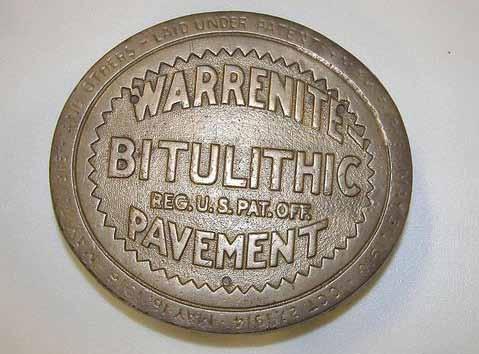
4 minute read
APWA: Using history to advance appreciation of public works
Jeffrey K. Stine, Ph.D.
Chair and Curator National Museum of American History – Smithsonian Institution, Washington, D.C. Past President, Public Works Historical Society
Advertisement
he bookends of APWA’s 75th anniversary—the Great Depression and the Great Recession—prompt some reflections on both the “public” dimensions of public works and the importance of history to that discussion. America has succeeded in part because Americans learned how to work collectively and collaboratively, through governmental bodies, to advance, sustain, and protect the country. National defense, transportation networks, water and waste-disposal systems, flood control, recreational facilities, and environmental protection are among the many activities rooted in public works. That is to say, they are functions serving the common good and achieved through collective action.
And yet, today, popular opinions about the appropriate role of government—of the very concept of “public”—could hardly be more different than when APWA was founded. In 1937, public works was used with enthusiasm to rejuvenate and expand the physical infrastructure so necessary to society’s short- and long-term functioning and prosperity. In the context of those dire economic times, public works assumed a highly positive social position, earning it a prominent place within the broader New Deal initiative. And APWA contributed to that effort as a catalyst for professionalism.
Now the Association celebrates its anniversary in the midst of a widespread debate over support for public enterprises and is confronted by changing perceptions of the meaning and value attributed to the word “public.” As historian Richard White has argued: “What is and should be public, and what is and should be private—that is, what is public business and what is none of the public’s business—is one of the great elemental contests of the Republic.” It is a fundamental tension in society. Disparagement of the very concept of “public” threatens to make it difficult for the profession to contribute to society’s betterment in the ways and to the extent that might otherwise happen.
For that reason, it is useful to recall how the Association confronted a similar erosion of support forty years ago. Because historians were all too frequently overlooking the critical role played by public works in the development of the United States, and because the impending bicentennial celebrations were encouraging such self-reflection by all professions, APWA decided to confront the image problem directly by commissioning a comprehensive history of the nation’s public works. That book—History of Public Works in the United States, 17761976, edited by Ellis L. Armstrong, Michael C. Robinson and Suellen M. Hoy—proved highly influential and its success helped propel APWA’s newly established entity, the Public Works Historical Society (PWHS).
The wide range of PWHS activities has included sponsoring historical sessions at APWA’s annual Congresses, producing a newsletter and Essays in Public Works History series, providing
An early twentieth-century brass pavement marker on display in the Smithsonian’s popular “America on the Move” exhibition
biographical sketches for the APWA Reporter’s column “People in Public Works,” encouraging APWA chapters to document, preserve, and interpret their histories, and awarding competitive article and book prizes.
Through the years, the PWHS has also worked directly with the Smithsonian Institution’s National Museum of American History to disseminate knowledge of the vital role played by public works in the nation’s history. Led by the PWHS’s professional staff (which included in the 1980s and 1990s Suellen Hoy, Michael Robinson and Howard Rosen) and its volunteer board of prominent public works practitioners and historians, the society assisted in the conception and development of several exhibitions, among them: “Make the Dirt Fly! Building the Panama Canal”; “Extending the Legacy: Planning America’s Capital for the 21st Century”; “Covered Bridges: Spanning the American Landscape”; “Oil from the Arctic: Building the Trans-Alaska Pipeline”; and “Tunnels!”
The PWHS proved instrumental as a co-sponsor of several daylong conferences at the museum, including: “Capital Cities: Adaptable Infrastructure for the Next Century” (which was broadcast on C-SPAN); “Tunnel Vision: Films about Tunnels and Tunnelers”; and “Down Under: Tunnels Past, Present, and Future.” The latter program proved so compelling that APWA published the revised and expanded papers in 1998 as Going Underground: Tunneling Past, Present, and Future.
The PWHS staff and board members have also assisted the Smithsonian with acquiring public works-related artifacts for its permanent collections. For example, James L. Martin donated an important set of manuscripts and photographs documenting the development of sanitary landfills, as well as an early twentieth-century brass pavement marker (produced in Fresno, California, for Warrenite Bitulithic Pavement), which is on display in the museum’s popular “America on the Move” exhibition (see photo at left).
Together, these collaborative ventures exemplify APWA’s efforts to use history to advance understanding and appreciation of public works. With the current questioning of the basic value and proper role of public endeavors, the need for this type of educational effort is greater today than at any time in the Association’s past.

Jeffrey K. Stine can be reached at (202) 633-3920 or stine@si.edu.










